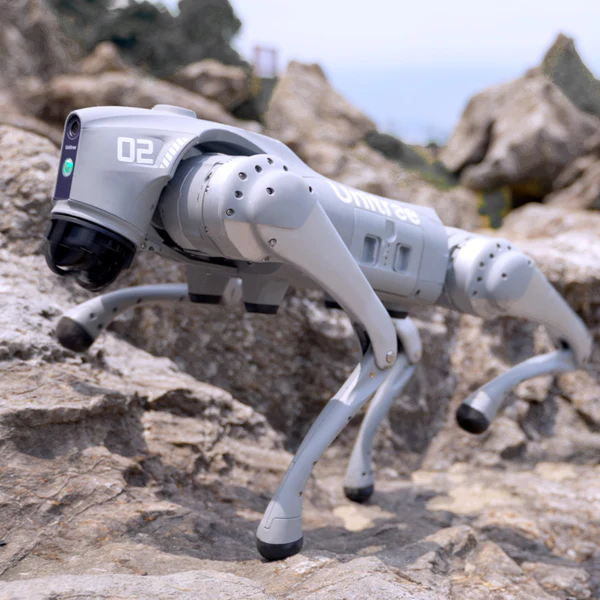
Blog Articles
The Revolutionary Impact of Quadruped Robotics in Public Safety
February 20, 2024 — 2 minutes
In the dynamic landscape of technological advancement, quadruped robots are emerging as a game-changer across multiple sectors, revolutionizing operations with their unparalleled versatility and efficiency. From search and rescue missions to public safety and law enforcement, these four-legged mechanical marvels are setting new benchmarks for what machines can achieve. At the heart of this revolution lies the Unitree Go2 Quadruped, a sophisticated piece of technology redefining industry standards and serving as an invaluable tool for STEM education, bringing concepts of programming, AI, autonomy, and lidar technology to life in classrooms.
Search and Rescue Operations
The deployment of quadruped robots in search and rescue operations marks a significant leap forward in disaster response capabilities. These robots, capable of navigating treacherous terrains and locating survivors under rubble, are proving indispensable in areas too perilous or inaccessible for humans and traditional search dogs.
After natural disasters like earthquakes or landslides, quadruped robots excel in moving over unstable rubble, squeezing through narrow gaps, and traversing areas impassable for wheeled robots, ensuring no stone is left unturned in the search for survivors. Equipped with advanced sensors, including cameras and thermal imaging, these robots can detect heat signatures or capture vital footage in areas beyond human reach, playing a crucial role in identifying survivors trapped under debris. Once survivors are pinpointed, quadruped robots can transport and deliver essential supplies such as water, food, or medical kits, bridging the gap until human rescuers can safely take over. Before human intervention, these robots can be sent to evaluate the stability of compromised structures, identify safe entry paths, and significantly reduce the risk to human life. With the ability to operate under extreme conditions and without the need for rest, quadruped robots offer continuous support in search and rescue efforts, enhancing the chances of survival for those affected by disasters.
Real-World Application: NYC FDNY’s Innovative Rescue Effort
A compelling example of quadruped robots in action occurred in April 2023, when the New York City Fire Department (FDNY) deployed its robot dog, affectionately known as Bergh, following the collapse of a garage. The squad, equipped with Bergh, was nearby and swiftly dispatched to the scene. Utilizing the robot’s thermal camera, the team thoroughly searched the debris. According to reports from the Mayor and Fire Department Commissioner Laura Kavanagh, as cited by the New York Times, the robot was instrumental in confirming that no individuals were trapped within the rubble. Furthermore, Bergh played a crucial role in inspecting the structural integrity of the surrounding buildings, showcasing the invaluable support these robots can provide in assessing hazardous situations promptly and safely.
The Unitree Go2: Bridging Industry and Education
The Unitree Go2 Quadruped stands out for its application in various industries and as a powerful educational tool. In classrooms, it is a practical example of how programming, AI, autonomy, and LiDAR technology create advanced robotic systems. By simulating real-world use cases, the Unitree Go2 offers students a hands-on learning experience, preparing them for future careers in STEM and beyond.
As the world continues to embrace the potential of quadruped robotics, the Unitree Go2 represents a pinnacle of innovation, demonstrating the profound impact these technologies can have on society. The possibilities are boundless, from saving lives in disaster-stricken areas to ensuring public safety and enhancing law enforcement operations. As we look to the future, integrating quadruped robots in various sectors underscores the importance of advancing STEM education, ensuring the next generation is equipped to push the boundaries of what these remarkable machines can achieve.
Shop More Products
From classroom-friendly kits to hands-on tools: Explore our hardware, packages, and accessories tailored for the educational journey.